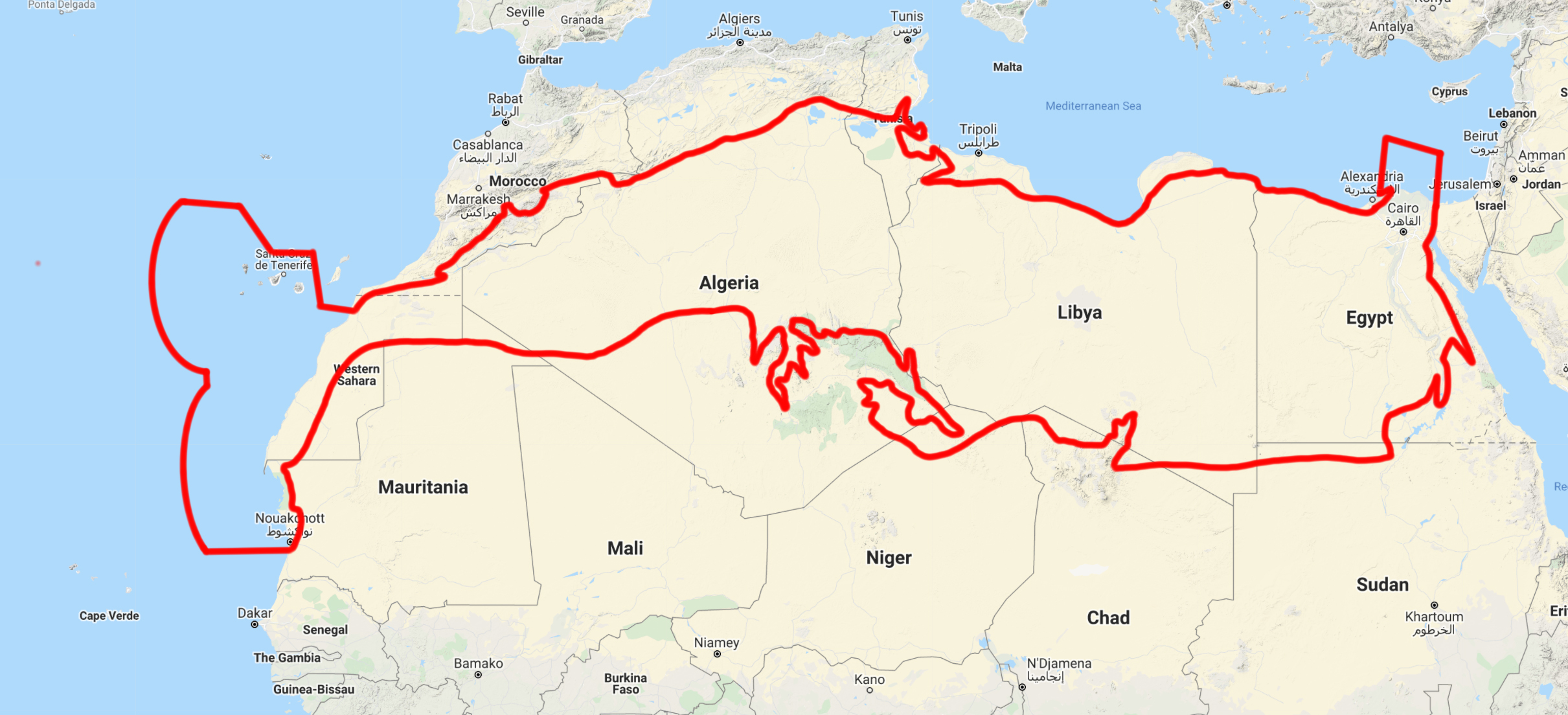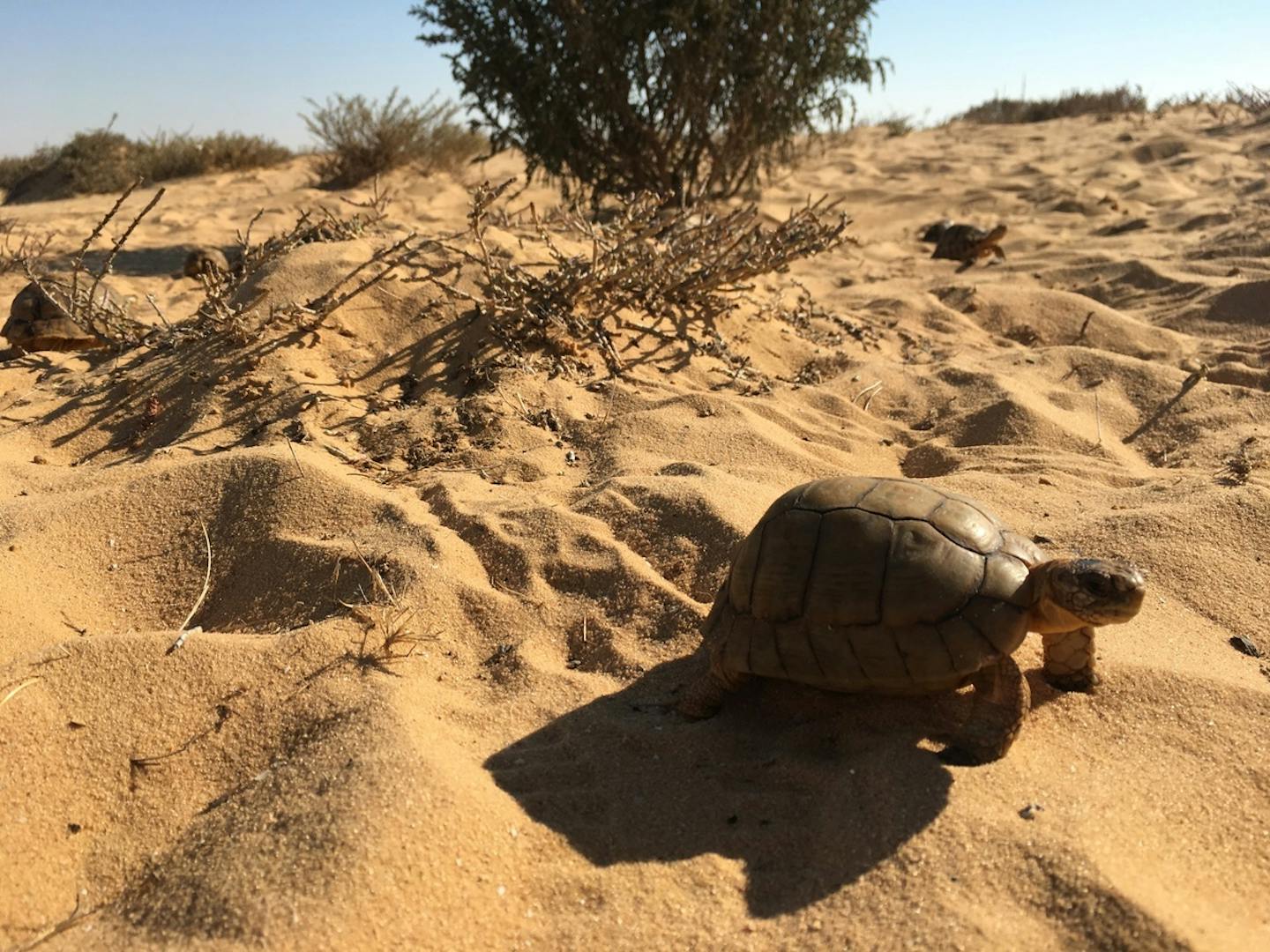How community-led action is successfully saving the Egyptian tortoise
- Nature Conservation
- Land Conservation
- Iconic Species
- Wildlife
- Reptiles
- Sub-Saharan Afrotropics
- Southern Eurasia Realm
One Earth's "Species of the Week" series highlights an iconic species that represents the unique biogeography of each of the 185 bioregions of the Earth.
On the southern shores of the Mediterranean Sea, where the waves meet the arid desert sands, the smallest tortoise in Northern Hemisphere can be found. The Egyptian tortoise, Testudo kleinmanni, once extensively roamed Egypt, Libya, and Israel, dispersing seeds that helped native vegetation bloom.
Today, they are critically endangered, with only pocket populations in the wild. But thanks to local efforts, NGOs work with communities to protect these tortoises.

The Egyptian tortoise is the iconic species of the Northern Sahara Deserts, Savannas & Marshes bioregion (PA24).
Discreet markings
Egyptian tortoises, also known as the Kleinmann's tortoise, Leith's tortoise, and the Negev tortoise, have a high domed shell. Its ivory-to-yellow coloring contrasts the dark brown that outlines each bony external plate, creating its pattern.
Concealed underneath on their plastron, or belly side is the Egyptian tortoise's characteristic marking. Two dark triangles on each abdominal scute.
Escaping the heat
The light coloring of the Egyptian tortoise acts as camouflage to avoid predators such as monitor lizards and birds of prey. Additionally, it regulates the impact of sunlight, allowing them to stay out in the extreme heat longer.
Their small stature is also an evolutionary trait for their environment. It helps them quickly adjust their body temperature to prevent overheating.
Females are larger than males weighing an average of 400 grams compared to males, who weigh around 105 grams. The length of adult females is between 10-12 centimeters (4-5 in), whereas males are between 8-10 centimeters (3-4 in).
Life in the desert
Resting during the high heat of the day, Egyptian tortoises forage for food at dawn and dusk. They eat a variety of vegetation and spread seeds through their droppings, helping sow new plant life in their ecosystem.
To get their water supply, Egyptian tortoises suck moisture from desert plants. They do this by plucking up stems with their beak-like jaws. The tortoise also excretes a concentrated acid rather than urine to retain water.
Hidden hatchlings
At around five years old, the Egyptian tortoise becomes sexually mature. Males chase after females and are even so bold as to ram into them. Their mating call is similar to that of the mourning dove.
Females lay a clutch of one to five eggs beneath bushes or in vacant rodent burrows. Hatchlings emerge from their shells in the early summer but remain inactive and hidden until the weather cools in the autumn.
Conservation and research
Three generations ago, it is estimated around 56,000 adult Egyptian tortoises existed. Due to habitat loss, over-collection for the pet trade, and resource competition, it is feared the wild population has been reduced to as little as 1,000 individuals.
BirdLife International, an organization founded on the mission to conserve the world's birds, has expanded its efforts to include global biodiversity. Through its role as Regional Implementation Team for the Mediterranean Hotspot of the Critical Ecosystem Partnership Fund (CEPF), it has funded two civil society organizations to protect the Egyptian tortoise.
The Al Hayat Organization to Protect Wildlife and Marine Organisms in Libya and the Hemaya Company for Environmental Consultancies and Services in Egypt work together across borders to safeguard the species. Their partnership includes research and community outreach.
The Hemaya Company set out to find a population of wild Egyptian tortoises to study and optimal locations for reintroduction. The team documented the species within the Zaranik Protected Area and was able to analyze their precise ecological requirements. With this information, seventy sites were assessed throughout Egypt.
Al Hayat Organization also researched potential habitat locations, evaluating the vegetation cover and density. Together, these surveys and outreach programs created by both organizations raised awareness about the importance of the species to surrounding communities.
Community-led action
As a result, in 2021, locals in Libya reported a major illegal smuggling attempt. The two groups worked with the Libyan Ministry of Environment to save 250 tortoises and release them into a protected area.
Through this collaboration of local NGOs and community members, researchers are optimistic about the future of the Egyptian tortoise. Funding on-the-ground conversation action could perhaps lead to the species once again roaming across the desert.
"For more than 30 years, funding agencies did not provide any support to conserve this species. Now, CEPF support and this fruitful cooperation give me hope that my dream will come true one day of restoring the natural habitats of this wonderful small creature along the Mediterranean coast." — Basem Rabia, Egyptian Tortoise researcherExplore Earth's Bioregions



